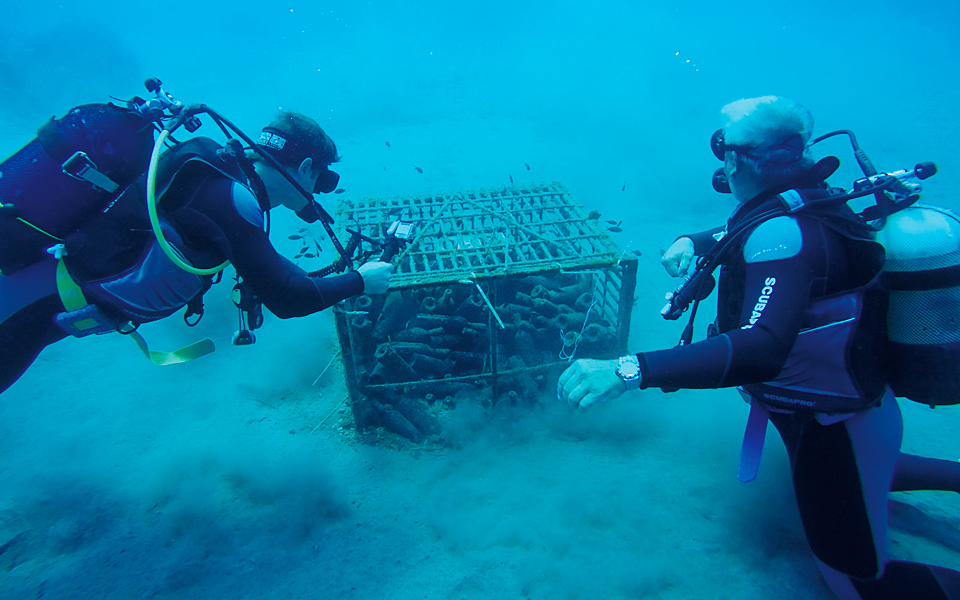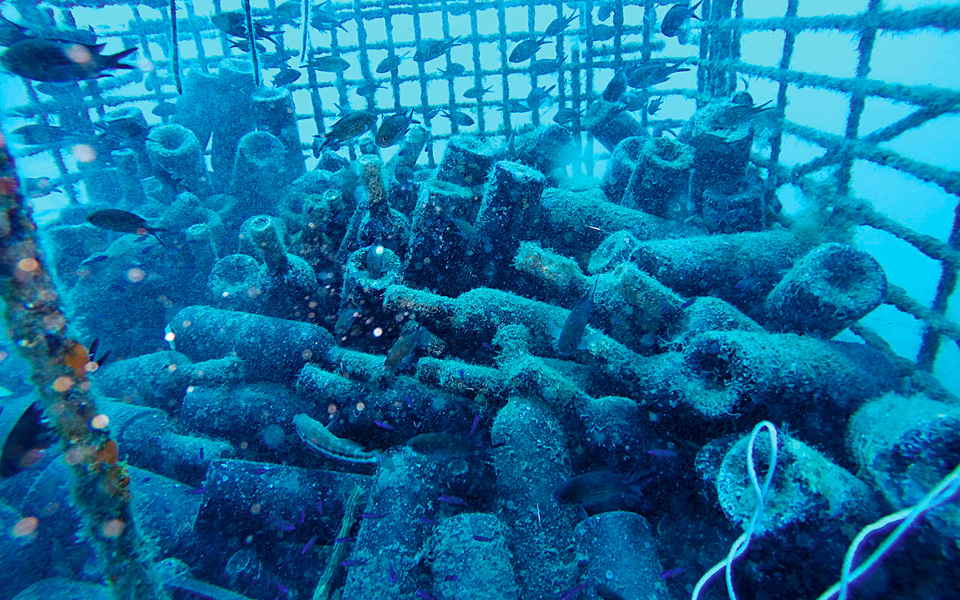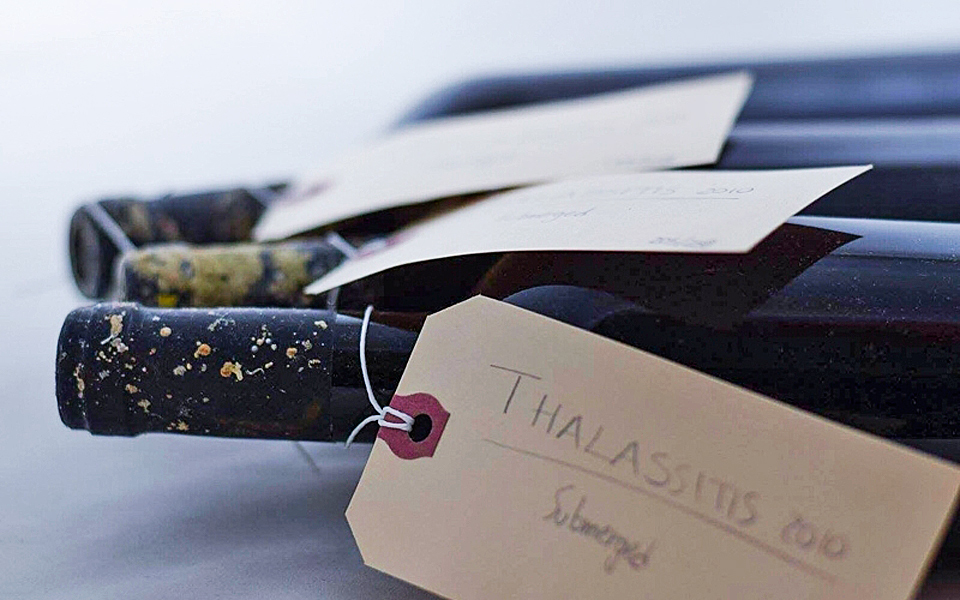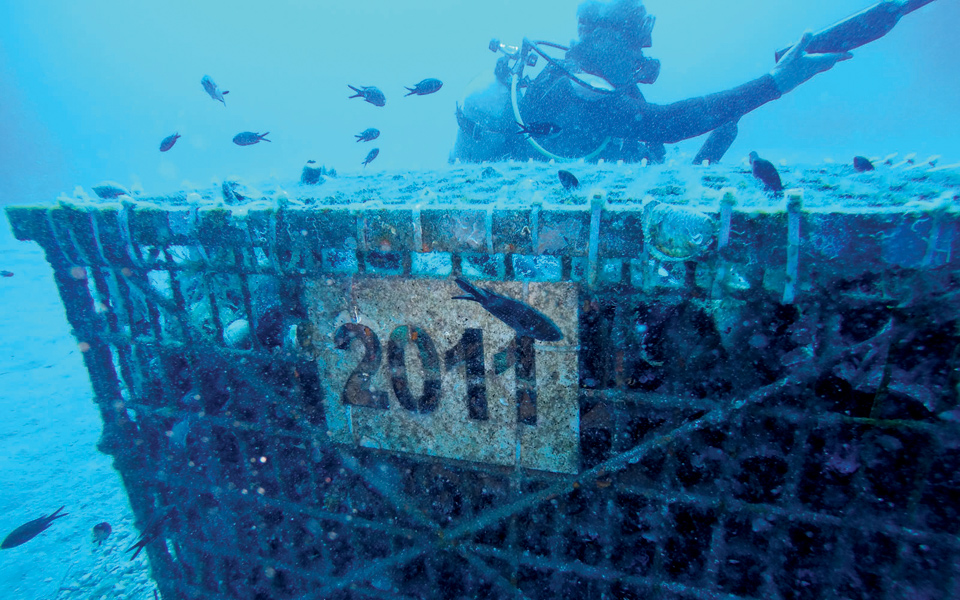Leloudas: Athens’ Legendary Wine Taverna
Since 1928, this family-run wine taverna...

Yiannis Paraskevopoulos, co-founder of Gaia Wines along with Leon Karatsalos oversee the process of aging
© Gaia Wines
Brilliant ideas often are not born out of necessity, but from a restless mind’s desire for progress.
Imagine a metal cage full of wines, with two floats on either side, gently being towed by a boat on the southeastern shore of Santorini. Then, it is slowly sunk into the sea. And it remains there, at a depth of 25 meters, for five years, turning into a temporary home for creatures of the deep.
Among the divers who oversee the process is Yiannis Paraskevopoulos, an agriculturalist with a PhD in Enology from the University of Bordeaux II and co-founder of GAIA Wines, along with Leon Karatsalos. When we asked him why a successful, internationally-awarded winery with a considerable market share decided to embark on such a marine adventure, he said: “It’s not an adventure, it’s a challenge. And part of a wider international experiment which is investigating the aging potential of some white wines – in Greece, it’s Thalassitis, a wine based on Santorini’s Assyrtico grapes.”
And why should this be done underwater?
“Because there, aging will occur without oxygen and without light, with a steady temperature for as long as is required.”
The quest of oenologists for an alternative way to age wine without oxygen interfering in the process has a short history.

Under the sea the process of aging occurs without oxygen and without light, with a steady temperature for as long as is required.
© Gaia Wines

Sunken "Thalassitis” has a remarkably fresh appearance and mature, well-rounded flavor
© Gaia Wines
Currently, 10 wineries around the world are experimenting with underwater wine aging – one in South Carolina and the rest in Spain, Italy and France. Two years ago, the famous French winery, Veuve Clicquot, created its “cellar in the sea,” sinking 300 bottles of sparkling wine and 50 magnum bottles in the icy waters of the Baltic. An identical sample is being aged in the cellars of the winery in Reims. Bottles from both the cellar and the sea will be tested in parallel every two years for the next five decades to determine the lifetime of champagne, which is aged in different conditions.
The idea for the experiment arose a few years ago after the discovery of a shipwreck off the coast of Finland. The ship sank around 1840 while transferring Veuve Clicquot champagne to Russia. 46 bottles were recovered intact, and though they were aged for over a century, they had an impressive freshness, according to experts.
But the matter does not end at the sea. In 2015 the famous Japanese Suntory Distillery announced plans to send six bottles of each type of exceptional whiskey into space to conduct a two-year study on how aging is affected by the total absence of gravity.
An internet search yields numerous articles relating to the issue of aging in an oxygen vacuum. There are of course skeptics who wonder whether the experiment is a publicity stunt without substance.

In August this year, the batch laid in 2011 was recovered and 211 bottles went on sale.
© Gaia Wines
Yiannis Paraskevopoulos makes clear this is not the case. His own conclusions, after comparing the “Sunken Thalassitis” with the same wine aged traditionally, are very positive. It has a remarkably fresh appearance and mature, well-rounded flavor.
Although this is an aged white, it has a bright, fresh color and maintains a fresh aroma. It is also more rounded than its land-aged counterpart and without any trace of oxidation.
During the first year of the experiment, in 2009, 500 bottles of Thalassitis were submerged but only three were successfully recovered because a storm swept away the cage.
The next harvest was placed deeper in the sea, and so suffered less damage from the weather. However, because of the increased pressure, several caps came off and the wine mingled with the sea water. In August this year, the batch laid in 2011 was recovered and 211 bottles went on sale. At the same time, the batch for 2015 was submerged, and it will be tested in 2020. And so the experiment continues.
*Originally published in Kathimerini newspaper
Since 1928, this family-run wine taverna...
Climate change brings water scarcity and...
Discover Greece’s winemaking heritage with tastings,...
Explore Corfu’s once-forgotten vineyards and discover...